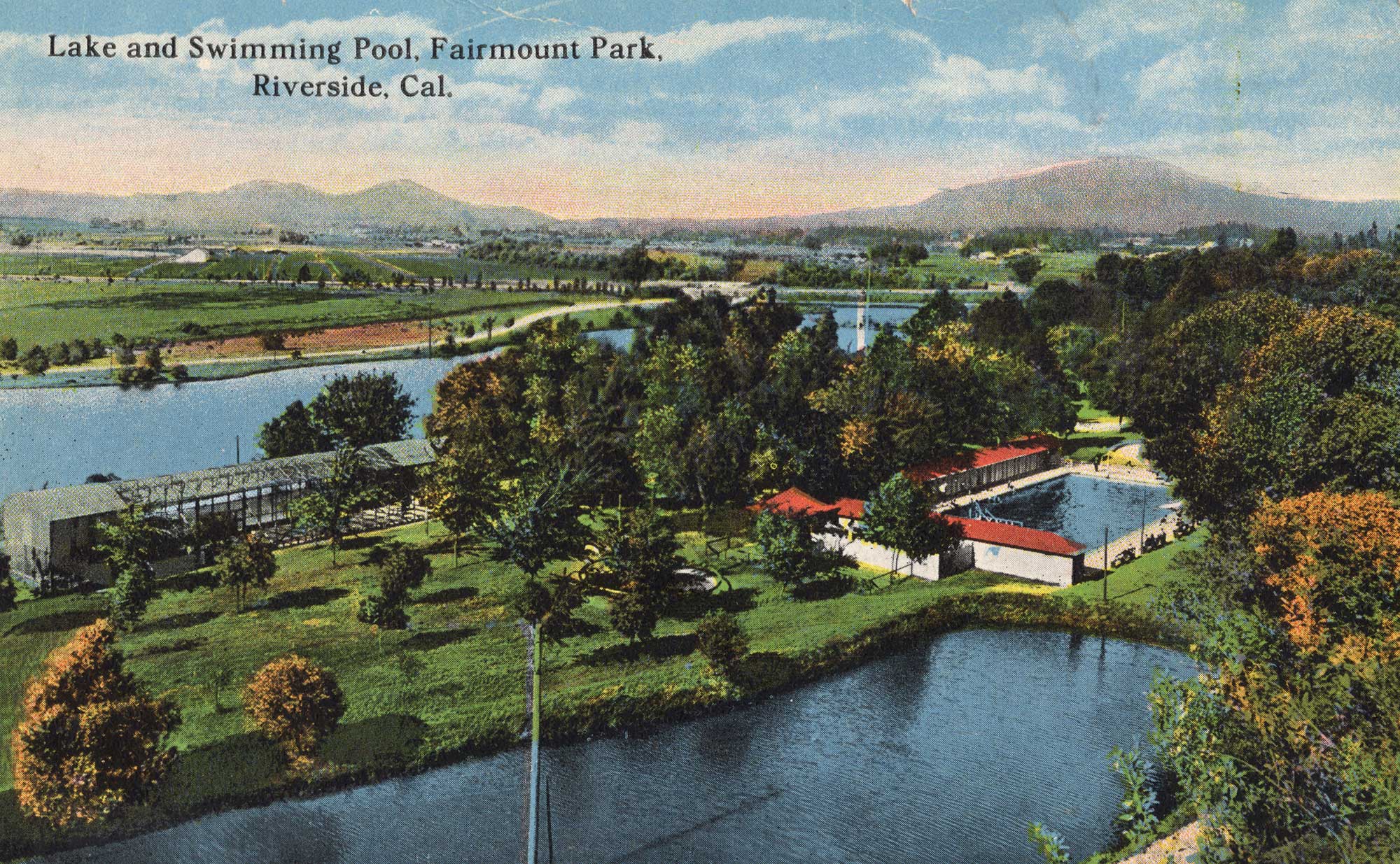After the Riverside Park Commissioners met with famed landscape architect John Olmstead on the afternoon of March 27, 1911, and had the plans fully explained, they were ready to proceed with systematic improvements to Fairmount Park. First on the list was a pumping and irrigation system to provide the water to the desired locations in the park. Soon to follow were plans for a plunge (pool) and wading pool. The site for the plunge was on the lake's southwest side near a sylvan (wooded or shady) pool extending off the lake.
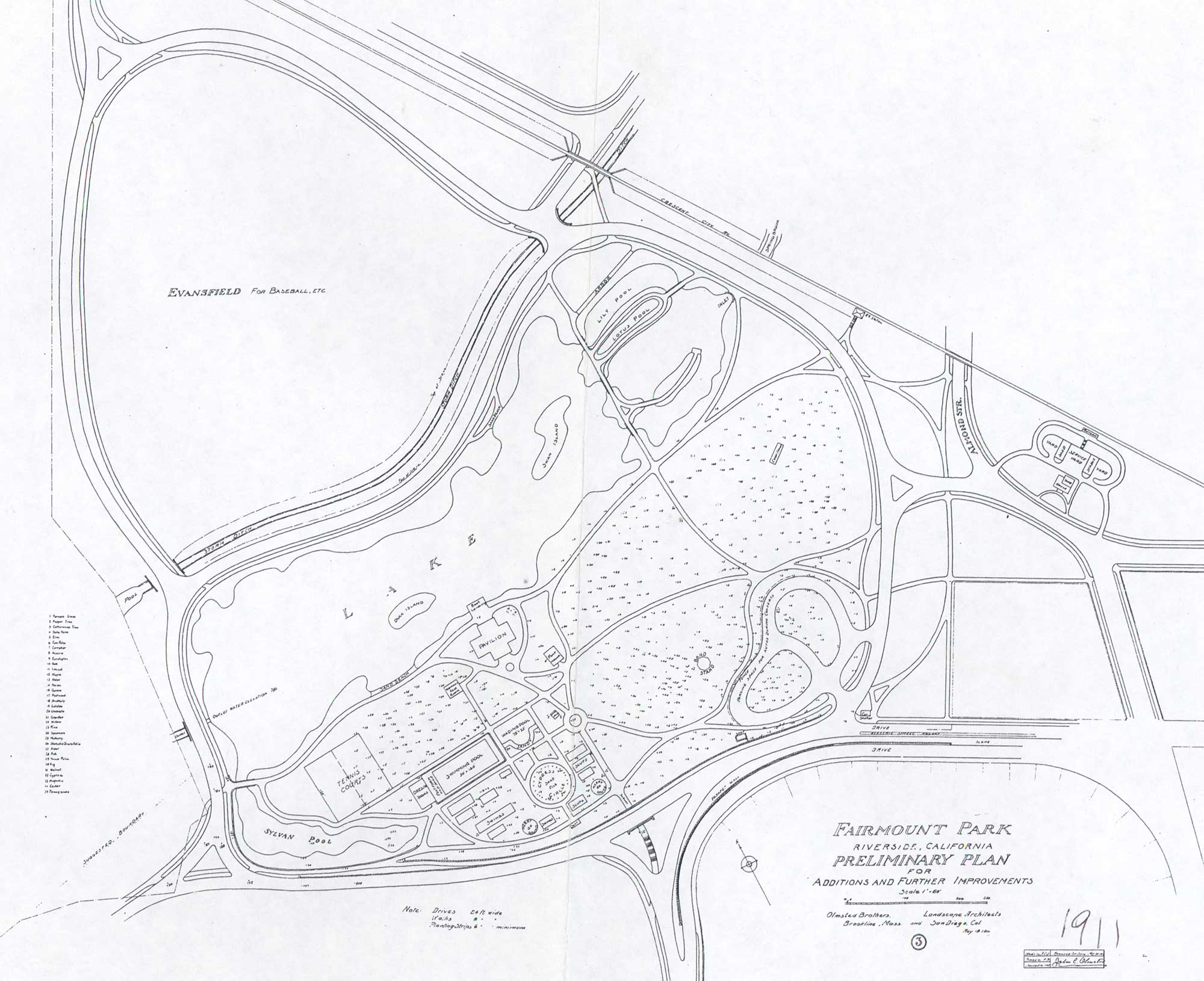
Plans for the plunge were drawn up by Mayberry & Parker, architectural engineers from Los Angeles who planned many of the new plunges springing up in Southern California. Bids needed to be submitted by the end of October, and Paul Ehlers came in with the lowest proposal of $3950 to construct the plunge and wading pool. Ehlers was also awarded the contract to furnish sandboxes, concrete walkways, and elevated seating areas around the wading pool.
By early February, news came that the plunge and wading pool were nearing completion. The plunge pool was 130 feet long and 50 feet wide. The depth went from about two-and-one-half feet to seven-and-one-half feet. The adjacent wading pool was 60 feet in diameter and ranged from four to eighteen inches deep. As work on the pools was finishing, plans were finalized to erect dressing rooms on the north and west sides of the pool. On March 15, David Irvine’s bid of $696 was accepted to build forty-six dressing rooms.
By the end of May, the plunge, wading pool, and bathhouse were ready for the approaching summer season. However, on May 27, the new bathhouse already needed repairs. A couple of days prior, a crew blasting out rocks at the nearby city quarry hill sent a good-sized rock through the roof of the new structure. A decision was made to use less dynamite and confine the blasting to earlier morning hours.
The park board hired Geoffrey Morgan of Longfellow School to manage the plunge and playgrounds for the summer. He in turn, hired Mrs. J. Van Koevering to be his assistant. Swimming suits of the highest quality were purchased for rental. It was stated that “the most fastidious of the women folk will be satisfied with the ladies’ suits.” The suits had the letter “F” with a circle around to identify them as from Fairmount Park. The pool use was free, but the rental charge for a suit and towel was twenty cents. Mr. Morgan was authorized to make arrests if necessary.
The plunge at Fairmount Park opened on Saturday, June 1, 1912, just in time for summer. Promptly at 9 a.m. Mr. Morgan opened the new swimming pool. Fourteen-year-old Robert Tracie, who lived on Third and Lemon, was the first to obtain his swimming suit, put it on, and plunge into the waters. High praise was offered by all who came that first day. The only complaint was the lack of a springboard.
That complaint was soon remedied with the installation of a springboard. The hours of operation were Monday through Saturday from 9 a.m. to 9 p.m. The pool opened at 1 p.m. on Sunday and closed at 6 p.m. A rope was soon stretched across the pool at the three-foot depth, and numbers were painted along the edge to denote the depth at those points.
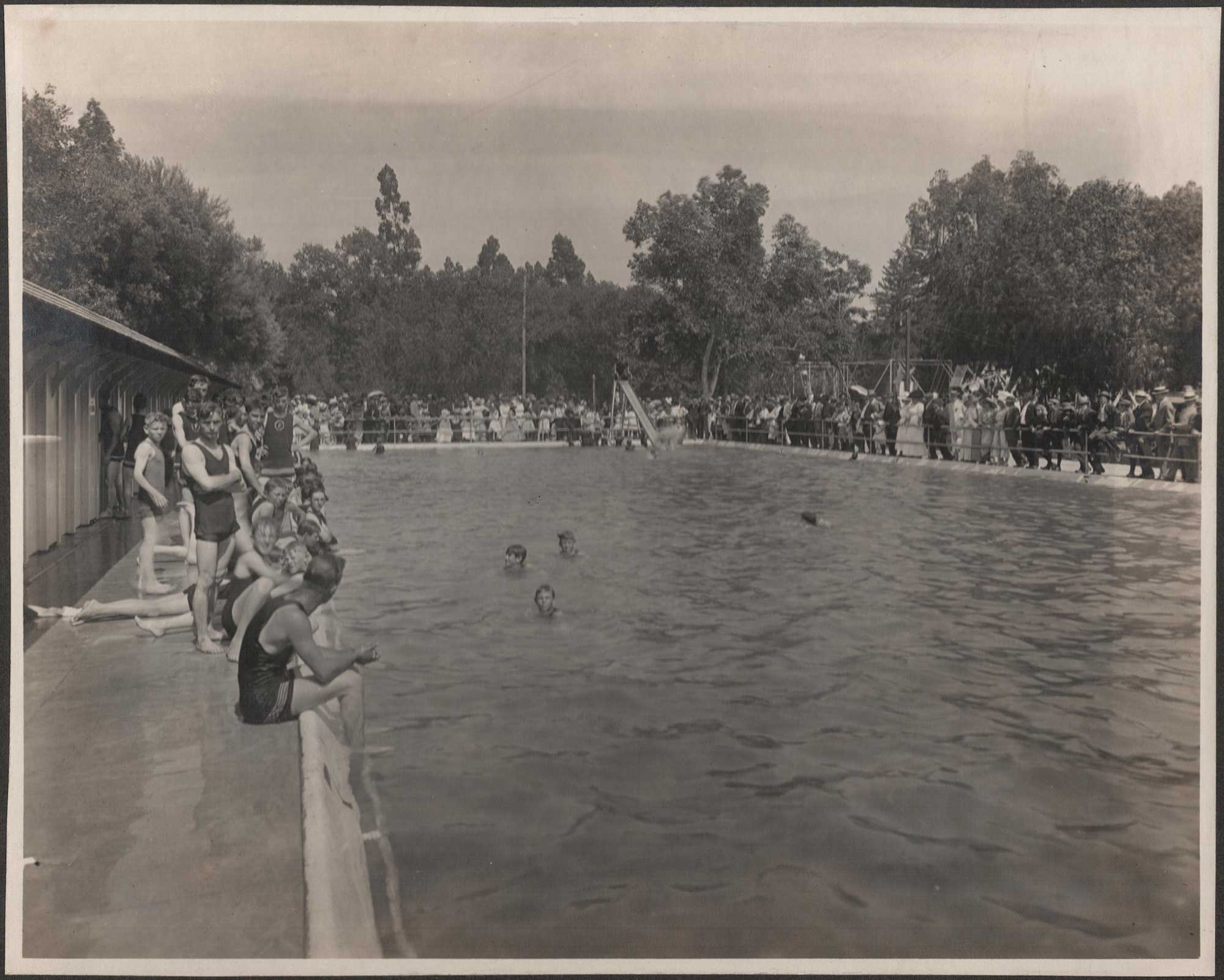
There was a constant circulation of water as a natural flow provided a steady steam, which was increased even more at night. To keep everything clean, the pool was drained every Monday and Thursday night and then refilled. A worker scrubbed the sides and bottom with a wire broom. The plunge could be emptied in two hours and refilled in five. The water came from artesian wells at the north side of the lake and was pumped in through a pipe extending over the pool's shallow end. Gates at the deep end were opened, and the water was drained into the lake. With the natural and continual flow of water, the average temperature of the water was a little over 72 degrees, a little cool for today’s standards. The water was so clear that someone said you could see a pin on the bottom of the pool.
The adjacent wading pool soon became a favorite meeting place for mothers and their younger children.
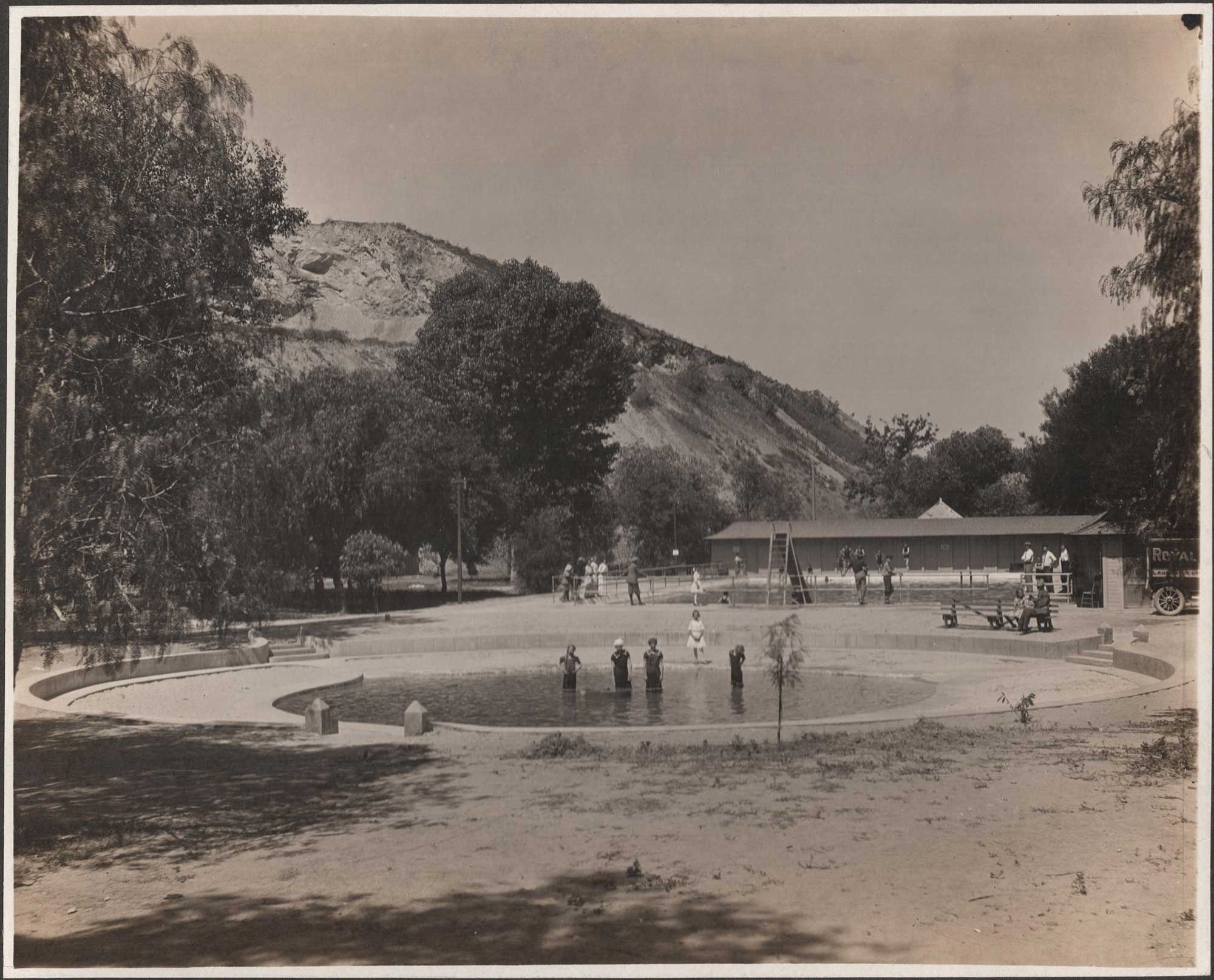
There is a disturbing side to the story of the Fairmount Park Plunge. The pool opened in an era of discrimination and segregation. The park was open to all races and ethnic groups, but the plunge was not. In the days before the pool opened, the decision was made to set aside only one day when the people of color community might use the pool.
For the 1914 summer swimming season, a high dive and a new slide were installed. The new slide was erected on the south side of the pool at the three-and-one-half depth mark. A water pipe was added to this slide to aid the swimmers in sliding down. On the previous slide, without the running water, swimmers on the dry slide often came to a stop or at least slowed down on their descent. The new high dive had four different heights from which the divers could choose, depending on their skill and courage.
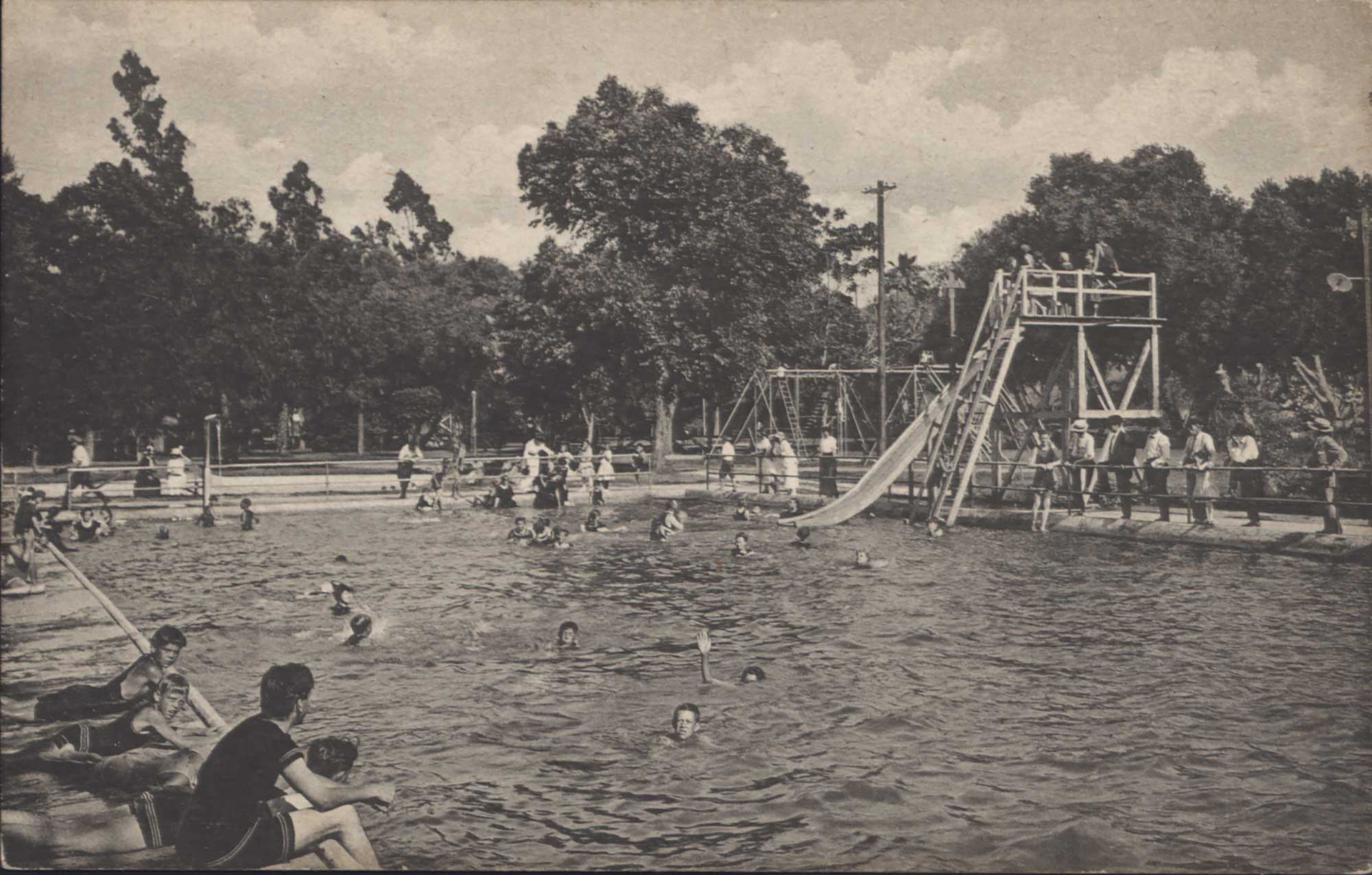
A newspaper headline in August of 1915 read: “Dunbar is Searching for Plank; Many to Walk it.” The old plank on the diving board had split down the middle, and park superintendent Harry Dunbar was attempting to locate a new hickory board. The trick was to find one that suited both “fat men and heavyweight swimmers” and the “Slim Jims” who complained that the board was too stiff. (Riverside Independent Enterprise, August 26, 1915).
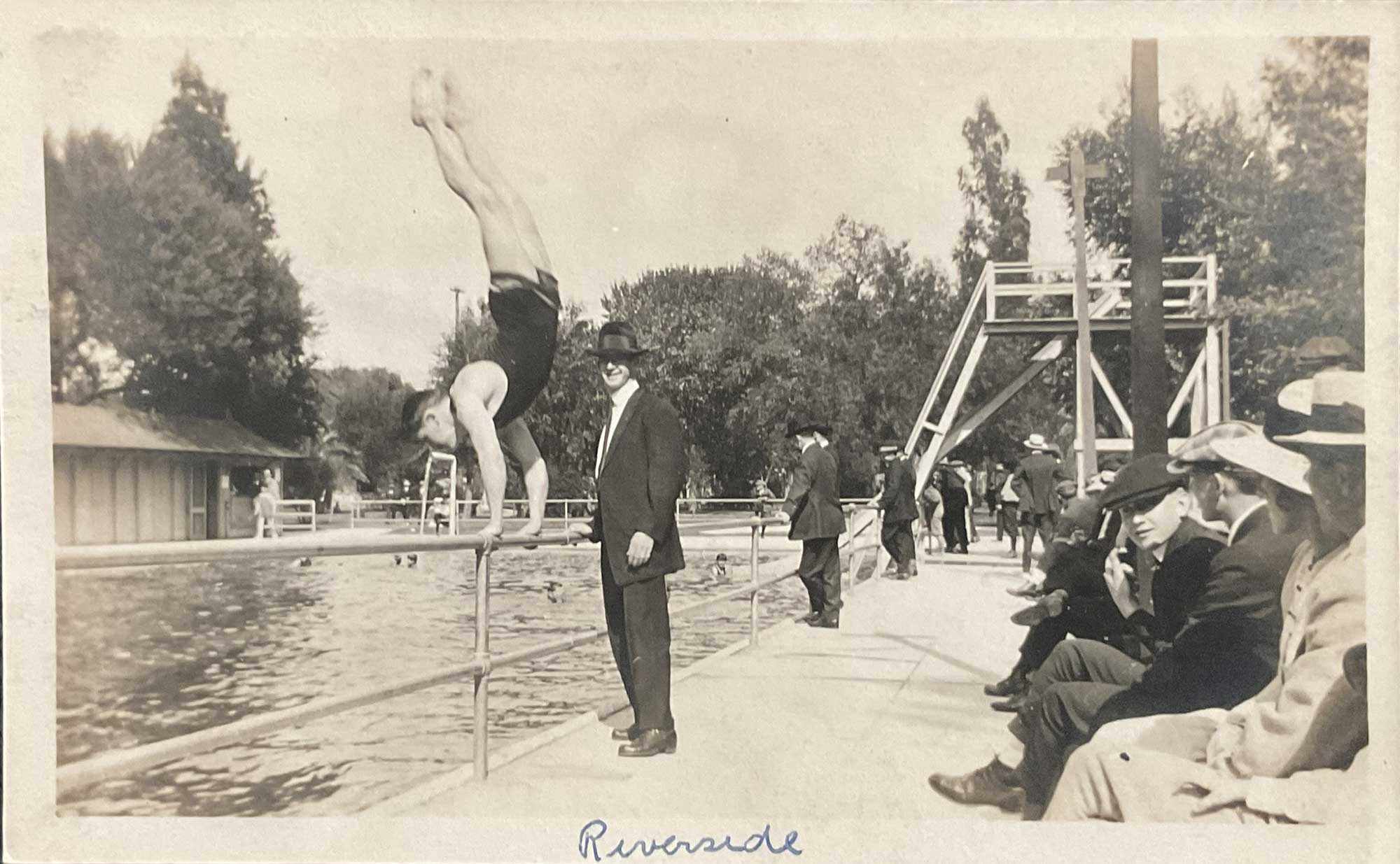
As the plunge gained in popularity, more dressing rooms were needed. In the months before the 1921 season, park workers added forty-seven additional rooms, giving the facility 123 dressing rooms. All the dressing rooms were repainted a steel gray, with the roofs colored green.
The Plunge at Fairmount Park remained a fixture at the park until it was closed by the park agency in April 1959 because of health and safety issues due to cracks and underwater seepage. The costs for repair work were too high. After almost 50 years, many Riversiders had to find a new place to dive into the water.
This article highlights a small part of a project undertaken by the Riverside Historical Society. Working with Pat Stewart, who, along with her husband, Bob, did much to revive the park, the Society plans to issue a publication on the history of Fairmount Park, Riverside’s second oldest and largest park. The Society is looking for more help. They are looking for articles, stories, and pictures. Dig through your scrapbooks and family stories. If you have some photos and stories or are interested in helping, email rhstrea@gmail.com.

